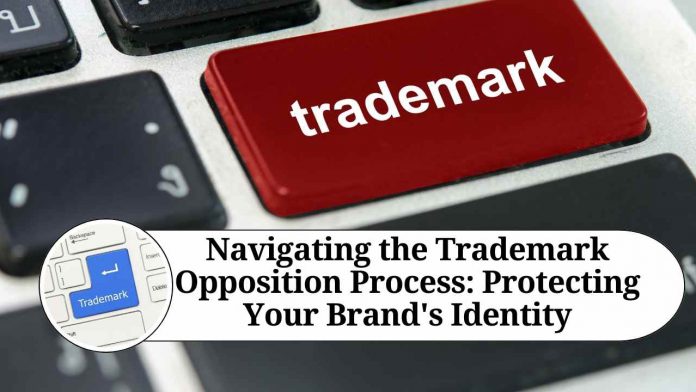Introduction
In today’s highly competitive business landscape, establishing a strong brand identity is crucial for success. Trademarks serve as valuable assets, distinguishing your products or services from competitors and building consumer trust. However, obtaining a trademark registration is not always a smooth process. Trademark oppositions can pose significant challenges and require careful navigation. In this blog, we will delve into the world of trademark oppositions and explore how to protect your brand’s identity.
Understanding Trademark Opposition
Trademark opposition occurs when a third party challenges the registration of a trademark with a competent authority, typically a trademark office. The opposition process aims to safeguard the interests of existing trademark owners and prevent the registration of confusingly similar marks that could create consumer confusion.
Reasons for Opposition
Several reasons can prompt a party to file a trademark opposition. The most common grounds include:
- Likelihood of confusion: A party may argue that the proposed trademark is similar to an existing registered mark, potentially leading to consumer confusion regarding the source of the goods or services.
- Descriptiveness or genericness: A mark that merely describes the goods or services, or is generic in nature, may face opposition due to its lack of distinctiveness.
- Dilution: Famous trademarks, even if not identical or similar, can be protected against dilution. Owners of well-known brands may oppose the registration of a mark that could blur or tarnish their reputation.
- Prior rights: If a party has been using a similar mark in commerce before the filing date of the opposed mark, they can oppose the registration based on their prior rights.
The Opposition Process
- Filing the Notice of Opposition: The opposing party initiates the process by filing a formal Notice of Opposition with the relevant trademark office. The notice should outline the grounds for opposition and provide supporting evidence.
- Response: Once the Notice of Opposition is filed, the applicant has an opportunity to respond to the opposition. The response typically involves addressing the claims made by the opposing party and providing evidence to support the registration of the mark.
- Discovery and Evidence Exchange: In some jurisdictions, parties engage in discovery to gather relevant evidence. This may involve requests for information, document production, and depositions. Both parties exchange evidence supporting their respective positions.
- Hearing: If the opposition is not resolved through negotiations or settlement, a hearing may be scheduled. During the hearing, both parties present their arguments and evidence to the trademark office or an appointed adjudicator.
- Decision: After considering the arguments and evidence presented, the trademark office or adjudicator issues a decision either upholding or rejecting the opposition. The losing party may have the option to appeal the decision, depending on the jurisdiction.
Protecting Your Brand
- Conduct a thorough search: Before filing a trademark application, conduct a comprehensive search to identify potential conflicting marks. This proactive approach can help minimize the risk of opposition.
- Assess potential risks: Evaluate the strength of your proposed mark and consider potential challenges it may face. Seek legal counsel if necessary to determine if any prior rights or conflicting marks could result in an opposition.
- Build a strong case: If faced with an opposition, gather compelling evidence and build a persuasive argument in support of your trademark. This may include market research, consumer surveys, and expert opinions.
- Seek professional guidance: Navigating the trademark opposition process can be complex. Engaging an experienced trademark attorney can provide invaluable guidance and increase your chances of a successful outcome.
Conclusion
Trademark oppositions are a reality for brand owners seeking to protect their intellectual property. Understanding the opposition process and taking proactive measures to mitigate risks can help safeguard your brand’s identity.
Other Related Blogs: Section 144B Income Tax Act
Frequently Asked Questions (FAQs)
Q. What is trademark opposition?
Trademark opposition is a legal proceeding where a third party challenges the registration of a trademark. It is a means to protect existing trademark owners from potentially confusing or conflicting marks being registered.
Q. Who can file a trademark opposition?
Any party with a legitimate interest can file a trademark opposition. Typically, it is filed by individuals or businesses that believe the registration of a particular mark would be harmful to their own trademark rights.
Q. What are the grounds for filing a trademark opposition?
The most common grounds for filing a trademark opposition include:
Likelihood of confusion with an existing registered mark.
Descriptiveness or genericness of the proposed mark.
Dilution of a famous mark’s distinctiveness.
Prior rights based on earlier use or registrations.
Q. How long do I have to file a trademark opposition?
The time limit for filing a trademark opposition varies between jurisdictions but is typically around 30 to 60 days from the publication of the mark for opposition. It’s important to check the specific rules and deadlines in your jurisdiction.
Q. What happens after a trademark opposition is filed?
Once a trademark opposition is filed, the opposing party has an opportunity to respond to the opposition. Both parties may engage in discovery to gather evidence, and a hearing may be scheduled. Ultimately, a decision is made by the trademark office or an appointed adjudicator.
Q. Can a trademark opposition be settled outside of court?
Yes, parties involved in a trademark opposition can choose to settle the dispute through negotiation or alternative dispute resolution methods. Settlements can involve various outcomes, such as coexistence agreements, trademark assignment, or changes to the proposed mark.
Q. What is the burden of proof in a trademark opposition?
In a trademark opposition, the burden of proof typically rests on the opposing party. They must provide evidence and arguments demonstrating why the registration of the proposed mark should be refused based on the applicable grounds of opposition.
Q. Can I appeal a decision in a trademark opposition?
In many jurisdictions, there is an option to appeal a decision in a trademark opposition. The specific procedures and deadlines for appeals vary by country, so it’s essential to consult with a trademark attorney familiar with the relevant jurisdiction.
Q. Can I continue using my trademark during the opposition process?
Yes, you can continue using your trademark during the opposition process. However, it’s crucial to monitor the progress of the opposition and be prepared to address any potential risks or challenges that may arise.
Q. Should I hire a trademark attorney for a trademark opposition?
Engaging a trademark attorney is highly recommended for a trademark opposition. They can provide expert advice, guide you through the complex legal process, help build a strong case, and increase your chances of a favorable outcome.




















